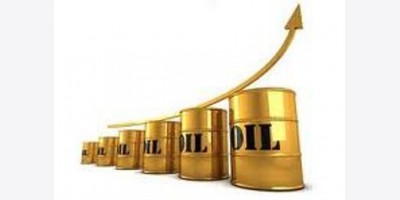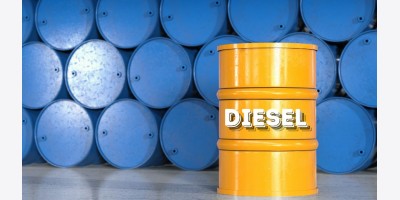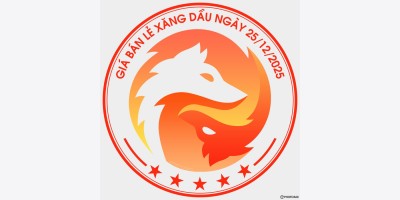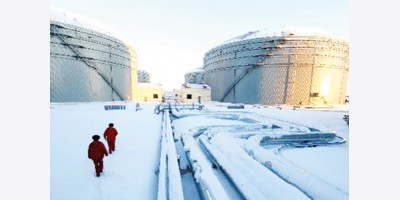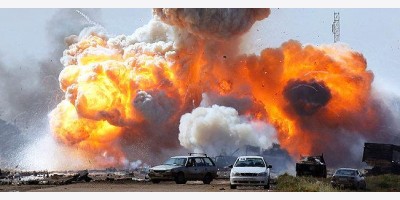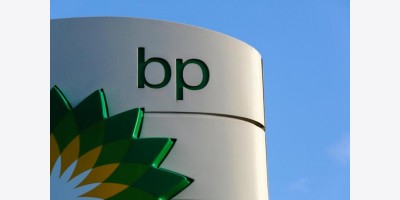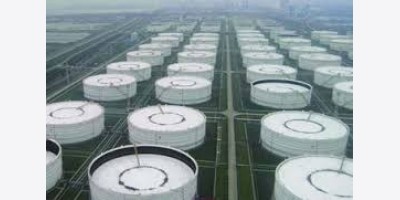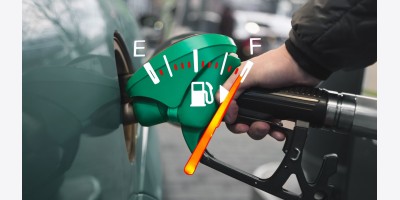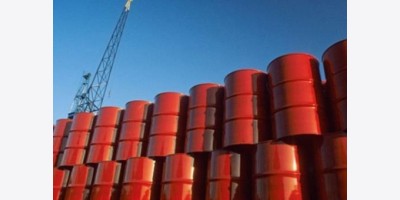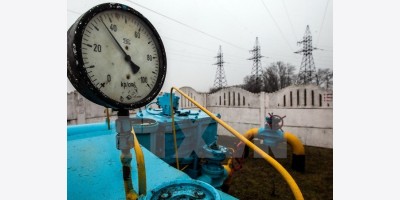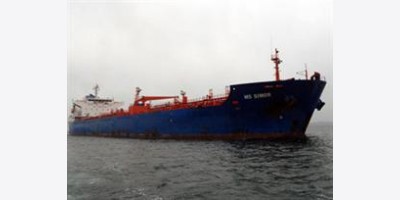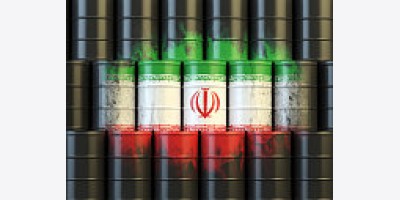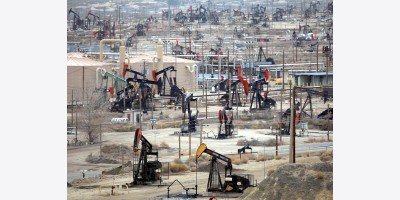Brazil’s Petrobras is targeting crude production of around 2 million barrels/day in Brazil in 2014, as the company aims to combat production declines, Petrobras Director of Gas and Energy Jose Martins said Tuesday.
This would represent an increase of around 3.5% on 2013’s production of 1.93 million b/d. Martins made the remarks during a briefing at the World Petroleum Congress in Moscow.
Petrobras said previously that it was anticipating an overall increase in production of 7.5% over 2014, in its 2014-2018 business plan. Martins added Tuesday that production would start to increase towards the end of this year.
After two years of decline due to maturing fields and aging infrastructure, Petrobras’ production started to recover earlier this year, as new offshore platforms acquired in 2013 have started to come online.
In April, Petrobras said that it had started to receive new pipe-laying support vessels, or PLSVs, called the Seven Waves PLSV, which it expects to significantly help boost oil production this year.
The vessels are used to install underwater pipes at offshore oil fields, and recover steel tubes already in place, allowing new wells to be connected more quickly to platforms. The system will be used on the Roncador, Papa-Terra and Lula-Iracema fields, as well as Cidade de Ilhabela, at the Sapinhoa subsalt field, Petrobras said previously.
Petrobras is targeting a production increase to 4.2 million b/d by 2020, which Martins said Tuesday the company is still confident of reaching.
“We have a plan up to 2020, when production will be around 4.2 million b/d and after 2020 the production will remain stable ... until 2030 at around 3.7-4 billion b/d,” Martins said.
GAS CONSUMPTION
Martins also said that Brazil is currently importing 15 million cubic meters/d of LNG. “LNG is mainly directed to thermal power plants, so if demand for electrical energy and power increases, we can import more,” Martins said.
Brazil also currently imports a further 30 million cu m/d of pipeline gas from Bolivia, and its own production is around 45 million cu m/d, Martins said.
Trading firm Trafigura regularly trades more than 2.5 million b/d in its oil and petroleum products division, the company said in an interim financial report. Trading volumes for the unit rose 7% year-on-year in the six months ending March 31, Trafigura said in the report, released Monday. “In the oil market, major changes such as the rise of US shale oil and gas production continue to create new patterns of supply and demand, and the need for companies able to respond dynamically in their trading and investment,” Executive Chairman Claude Dauphin said in the report. The company, reached for comment, declined to provide additional details.
The second cargo of Kurdish crude loaded from the Turkish port of Ceyhan has been transferred from the United Emblem to the SCF Altai, market sources said Tuesday.
Traders said the cargo had been transferred to SCF Altai at the ship-to-ship transfer zone off of the coast of Malta earlier this week.
According to Platts cFlow ship-tracking software, both United Emblem, owned by Marine Management Services, and SCF Altai, owned by Sofcomflot, were in the region Sunday to Monday. Both shipowners declined to comment Tuesday.
SCF Altai now has a destination of Ashkelon in Israel, while United Emblem is indicated as heading back to Ceyhan. An earlier Kurdish cargo out of Ceyhan was loaded on United Leadership in late May.
Those barrels were reportedly turned away from Mohammedia, adjacent to Morocco’s Samir refinery, in late May. United Leadership is currently stationary off of the coast of Morocco, according to Platts cFlow.
Kuridsh natural resources minister Ashti Hawrami told a London conference organized by CWC that two additional cargoes of crude from the semiautonomous region of northern Iraq are expected to load later this week, bringing the total number of exported volumes to four.
While it has yet to have a significant effect on global oil supply, the week-long militant rampage in Iraq could cut into long-term world production expectations given that the insurgency is concentrated in areas that are widely expected to help supply the market over the next couple of decades, Platts Director of News John Kingston said Tuesday.
The International Energy Agency’s projections call for a global oil output of about 112 million b/d by 2035 and that forecast assumes there will be a significant contribution from Iraq, Kingston said said during the “State of North America Oil & Gas” webcast, sponsored by Standard & Poor’s Ratings Services. S&P and Platts are units of McGraw Hill Financial.
Should the Sunni rebel-led insurgency continue for any time, the impact could be felt years from now, he said. “[A]nything that will undercut big supply gains from Iraq that the world was counting on, is certainly something very much to worry about.” Kingston said Iraq produced 3.28 million b/d in May, according to Platts estimates, just below the 3.35 million b/d in February that was the highest since the first Gulf War in February 1991.
The vast majority of Iraq’s supply comes from its southern portion. “That oil would be very cheap to produce; you’re talking about ... $10/barrel if not less,” he said.
Moreover, in the near-term “it’s hard to imagine you’ll see a lot of investment from western oil companies, certainly not in areas where [jihadist group] ISIS is in control — in a country where the terms of investment already weren’t that great.” And even if there is a breakthrough in talks between the Western powers and neighboring Iran over economic sanction related to Iran’s nuclear program, increasing that’s country’s oil production, it is debatable how fast production there can rise.
While the country is claiming it can bring “a lot of oil back on,” some of the supplies could come from floating storage and may not be necessarily production, Kingston said. Industry has difficulties returning long-shuttered fields to production, he said. “When you turn production back on, it doesn’t flow like water from tap. So the idea that Iran can get to the 3.7 or 3.8 million b/d [it was producing] before sanctions [were imposed], I’d call into question,” he added.
And if the global oil price should spike, the US’ ongoing debate on whether to lift its decades-long crude export ban will affect the discussion, he said. All this points to the market’s “real problem” — namely, for all the billions of dollars being spent on exploration and development, the industry is not increasing production fast enough to match rising demand, Kingston said, adding that only the US and Canada are doing that at anything resembling a substantial rate.
By Jeremy van Loon and Andrew Mayeda Jun 18, 2014 4:56 AM GMT+0700
The Canadian government approved Enbridge Inc. (ENB)’s Northern Gateway pipeline, eliminating the final major regulatory obstacle for the conduit that would move Alberta oil to the Pacific coast for shipment to Asia.
The approval of the C$6.5 billion ($6 billion) project by Prime Minister Stephen Harper’s cabinet is subject to Enbridge satisfying the 209 conditions placed on the proposal by a regulatory review panel in December, Natural Resources Minister Greg Rickford said in a statement today from Ottawa.
“The proponent clearly has more work to do in order to fulfill the public commitment it has made to engage with Aboriginal groups and local communities along the route,” Rickford said in the statement.
Canada’s petroleum producers are seeking ways to get land-locked and price-depressed Alberta crude to world markets, especially after delays to TransCanada Corp.’s proposed Keystone XL pipeline. Harper’s government has made building energy infrastructure a national priority, part of C$650 billion of investment in more than 600 existing or planned projects over the next decade to develop the country’s natural resources, including the world’s third-largest pool of recoverable crude reserves.
Crude producers such as Canadian Natural Resources Ltd. and Cenovus Energy (CVE) Inc., facing a five-year average discount of almost $20 a barrel for their oil relative to U.S. benchmarks, are seeking new markets. Canadian oil-sands output is set to more than double to 4.1 million barrels a day by 2025 from 2013, according to the Canadian Association of Petroleum Producers, an industry group.
Opposition Remains
While the federal government’s endorsement is the last major federal regulatory hurdle for a project first proposed a decade ago, the pipeline still faces opposition from environmental and aboriginal groups who have promised to delay its construction. The province of British Columbia, which controls local permits, has also set five conditions that include financial benefits and environmental protection before signing off on the pipeline.
The 1,177-kilometer (731-mile) conduit would start in the eastern Alberta plains at Bruderheim, about 35 miles northeast of Edmonton, and cross the Rocky and Coast mountain ranges to the Pacific port of Kitimat, British Columbia, carrying as much as 525,000 barrels a day of diluted bitumen. From there, the fuel would be loaded onto tankers and shipped through the Douglas Channel, a passage that narrows to less than a kilometer.
Opposition lawmakers in Ottawa condemned the decision. Tom Mulcair, leader of the main opposition New Democratic Party, vowed to rescind the approval if his party wins elections scheduled for next year.
Severe Threat
“You can no longer force projects like this from the top down,” Mulcair told reporters in Ottawa. “We are talking about a severe threat to social order, social peace.”
Liberal leader Justin Trudeau also said he’d overturn the decision if he wins the next election. “This government has from the very beginning been a cheerleader for this pipeline when what we need is a referee.”
Earlier today, Harper defended the process that led to the decision, telling lawmakers in Ottawa the government makes decisions “based on the facts.”
“This government has approved some projects, not approved others, conditionally approved some based on the findings of panels, based on the findings of fact,” Harper said.
Alberta Premier Dave Hancock called today’s decision “a step forward in accessing new markets for Canada’s energy resources.”
Much Work
“We recognize there is still much work to be done with the Northern Gateway project and we look forward to the opportunities it presents for all Canadians,” Hancock said in an e-mailed statement.
Along with recommending approval of Northern Gateway in December, a regulatory panel imposed 209 conditions, which Chief Executive Officer Al Monaco said required Enbridge to recalculate the cost of the project. The Calgary-based company hasn’t provided a timeline for when the new estimates will be made public.
Under the regulator’s conditions, Enbridge must have liability coverage of C$950 million and lead research efforts on heavy-oil spills in marine and freshwater environments. Other conditions include building extra oil storage facilities at Kitimat and establishing an emergency-response plan with the ability to handle a spill of about 230,000 barrels, more than three times the legal requirement.
Legal Action
Aboriginal groups, including the Yinka Dene Alliance, have threatened legal action to stop the pipeline or delay its construction. Opponents fear an oil spill would destroy their fisheries and shellfish beds. Some environmental and aboriginal groups have already filed lawsuits in federal courts seeking review of the regulator’s recommendations.
Harper’s government has introduced regulatory changes, added safety regimes for pipelines and marine-oil tankers and stepped up engagement with aboriginals in an effort to bolster public support for the development of energy infrastructure.
Only a minority of British Columbians wanted Harper’s government to approve the project. Thirty-four percent of residents said they want it blocked, while 33 percent want it delayed for further review, according to a Bloomberg-Nanos poll published on June 3. Twenty-nine percent say they wanted Northern Gateway approved, according to the poll.
Spill Fears
The poll also showed fears of an oil spill are top of mind. Thirty-six percent of respondents said the idea that the pipeline might lead to a spill best represented their view. Next was the perspective that the project will create jobs in the province, at 25 percent. Only 15 percent said the idea that the pipeline will contribute to climate change best represented their viewpoint.
Forty-seven percent of respondents said they’d be less likely to vote for Harper’s Conservative Party if the government approves the project, including 19 percent of those who said they supported Harper in the 2011 elections.
Enbridge’s C$500 million of 4.57 percent notes due March 2044 yielded 159 basis points more than Canadian government benchmarks yesterday. The premium has widened three basis points in the past week, according to Bloomberg composite prices. Over the same period average spreads on the Bank of America Merrill Lynch Canada Corporate Index narrowed 1 basis point.
British Columbia Premier Christy Clark’s five conditions for backing the project include being financially compensated for accepting the risks associated with spills. In November, British Columbia and Alberta signed a framework deal that sets the ground rules for development of pipeline projects in the nation’s westernmost province.
Secured Projects
Northern Gateway is one of C$36 billion worth of commercially secured projects that Enbridge, Canada’s largest pipeline company, is developing through 2017, including reversing an oil pipeline to carry crude to refineries in Quebec. The company expects earnings per share to grow 10 percent to 12 percent through 2017.
While crude producers say pipelines would ease transportation bottlenecks that have suppressed the price of Canadian heavy oil, efforts to build energy infrastructure have run into opposition both at home and in the U.S.
President Barack Obama said in April he was delaying a decision on the Keystone project because of a court battle in Nebraska, extending a review now in its sixth year.
To contact the reporters on this story: Jeremy van Loon in Calgary at jvanloon@bloomberg.net; Andrew Mayeda in Ottawa at amayeda@bloomberg.net
To contact the editors responsible for this story: David Scanlan at dscanlan@bloomberg.net Paul Badertscher, Chris Fournier
Oil-Gold Tie Breaks 1st Time in 5 Years as Economy Grows
By Moming Zhou and Debarati Roy Jun 18, 2014 6:01 AM GMT+0700
A five-year-long link between crude oil and gold has come apart as the economic recovery boosts energy consumption and lowers the metal’s appeal as a haven, encouraging investors to buy oil and sell gold.
The 120-day correlation between West Texas Intermediate crude and gold futures slipped into negative territory this year for the first time since July 2009, according to data compiled by Bloomberg. The relationship tightened, though remained negative, last week as military tension in Iraq boosted prices for both commodities.
Crude and gold moved in tandem for a half decade as investors sought to diversify into commodities from equities and bonds. U.S. economic growth is boosting expectations that fuel demand will rise, while gold is losing its allure as an alternative to the dollar, with the Federal Reserve signaling tighter monetary policy. Gold will be the worst-performing commodity in the next 12 months, forecast 71 percent of investors polled by Credit Suisse in May, while 49 percent said crude has the best outlook.
“The long-term chart for oil tells me that the price wants to go higher,” Michael Shaoul, who oversees more than $20 billion as chief executive officer at Marketfield Asset Management LLC in New York, said by phone yesterday. “Gold had a modest bounce this month, which I think has run its course.”Oil Rising
WTI crude slid 54 cents yesterday to $106.36 a barrel on the New York Mercantile Exchange. The grade has risen 4.7 percent this quarter. Brent, the European benchmark, rose 51 cents to $113.45 on the London-based ICE Futures Europe exchange, up 5.3 percent in the second quarter. Gold futures for August delivery dropped $3.30 to $1,272 an ounce on the Comex in New York, down 0.9 percent this quarter.
U.S. gross domestic product will increase 2.2 percent this year and 3 percent in 2015, following a 1.9 percent gain in 2013, according to economists surveyed by Bloomberg. The economy plunged into the worst recession in the post-World War II era in 2009. The Fed reduced its monthly asset buying to $45 billion in April, the fourth straight cut of $10 billion. The central bank, which ends a two-day meeting today, may raise its benchmark interest rate faster than investors expect, according to a majority of economists in a June 12-16 survey.
“For the oil market, we’re coming out of a period of economic malaise and should see demand grow with increased economic activity,” Rob Haworth, a senior investment strategist in Seattle at U.S. Bank Wealth Management, which oversees about $120 billion of assets, said by phone last week. “The Fed taper, and ultimate ending of quantitative easing, takes away fundamental support for the gold market.”
Iraq Tension
The 120-day correlation between WTI and gold was -0.06 yesterday compared with -0.1 on June 11. The link strengthened to 0.62 in April 2010. The Brent-gold correlation was 0.08 yesterday compared with 0.05 on June 11. The Brent correlation dropped to -0.1 on Feb. 28. A figure of -1 would mean the two move opposite to each other.
Crude and gold gained after Islamic State in Iraq and the Levant captured Mosul, Iraq’s biggest northern city, last week and advanced toward Baghdad, pushing OPEC’s second-largest oil producer to the brink of civil war.
“Gold’s correlation with oil has strengthened of late, driven by growing tensions in Iraq,” analysts including Edel Tully at UBS AG said in a report yesterday. “Looking back over the past year shows that the relationship between gold and oil has generally weakened.”Portfolio Shift
Investors should “tilt” their energy holdings by 2.5 percentage points to 25.8 percent of their commodity portfolio, Societe Generale SA said in a report published June 4. Gold positions should be cut by 5 percentage points to 17.6 percent, the bank said.
The International Energy Agency raised forecasts for global oil demand in 2014 by 65,000 barrels a day, following stronger-than-expected growth in the first quarter in Japan, the U.S., Germany and the U.K. World fuel consumption will increase by 1.3 million barrels a day, or 1.4 percent, this year to average a record 92.8 million barrels day, the Paris-based adviser to oil-consuming nations said in a monthly report on May 15.
“We are buying crude and selling gold,” Bill Baruch, a senior market strategist at Iitrader.com in Chicago, said by phone on May 27. “Gold is not the most attractive safe-haven asset at the moment. It’s not been able to produce much yield at all. Crude oil has been moving higher with the better economic outlook.”
Selling Gold
Holdings in exchange traded funds backed by gold touched 1,714.4 metric tons on June 16, the lowest since October 2009. In 2013, more than $73 billion was erased from the value of the funds, according to data compiled by Bloomberg.
“We continue to recommend selling gold rallies as we believe that gold is in a multiyear downtrend driven by the prospect of U.S. rate hikes,” Societe Generale said, forecasting that the metal, trading above $1,200 this year, may break below that level in 2015 and fall under $1,000 in 2016.
Goldman Sachs Group Inc. predicted that gold will extend 2013’s 28 percent slump in 2014. The drop last year ended a 12-year rally. An accelerating U.S. economy means bullion will fall to $1,050 in 12 months, Goldman forecasted on May 13.
“We have seen some moves in gold but nothing significant to take it higher,” Laura Taylor, senior market strategist at RJO Futures, said in a telephone interview from Chicago yesterday. “Oil, on the other hand, is more tradable and can go in one direction very fast.”
To contact the reporters on this story: Moming Zhou in New York at mzhou29@bloomberg.net; Debarati Roy in New York at droy5@bloomberg.net
To contact the editors responsible for this story: Dan Stets at dstets@bloomberg.net Steve Stroth
By Dan Murtaugh Jun 18, 2014 4:32 AM GMT+0700
North Dakota, home to the Bakken shale formation, became the fourth state in U.S. history to produce more than 1 million barrels of oil a day in April.
Output increased by 2.5 percent from March to 1,001,149 barrels a day, the state’s Department of Mineral Resources reported today. Texas, California and Alaska have crossed the million-barrel mark. Only Texas remains above it, at almost 3 million barrels a day.
Production will increase through the summer as better weather allows crews to finish more wells, Lynn Helms, the department’s director, said during a conference call with reporters today.
“Permitting and drilling activity indicates that we’ll continue to see production grow and build well above 1 million barrels a day,” he said.
Oil and gas from the Bakken and other shale formations helped the U.S. produce the equivalent of 87 percent of its energy needs in 2013, the highest level since 1985, according to data from the Energy Information Administration. The U.S. imported 7.7 million barrels of crude a day in 2013, the least since 1996.
Most oil produced in North Dakota comes from the Bakken and Three Forks shale formations, layers of hydrocarbon-rich rock more than a mile beneath the Earth’s surface. High crude prices and improvements in drilling technology have helped companies like Continental Resources Inc. (CLR) and Whiting Petroleum Corp. (WLL) tap into the previously inaccessible shale.
Two-Step Process
Creating wells in the Bakken is a two-step process. Drillers make horizontal bores along the shale, and then completion teams inject a high-pressure mixture of water, chemicals and sand to create micro-fissures in the rock through which gas and oil can seep.
Output from shale wells declines by 60 percent to 70 percent in the first year, according to Austin, Texas-based Drillinginfo Inc., faster than traditional wells. Because of the steep decline rate, companies need to finish new wells constantly. Bad weather can slow the completion process, curbing production growth.
April work was hampered by some lingering bad weather, Helms said. Roads were shut for three days because of heavy rain, and there were nine to 11 days of wind blowing faster than 35 miles per hour, too strong for completion work.
The weather in May and June has been much more benign and should lead to stronger growth, he said.
“Every month with an ‘R’ in it is winter in North Dakota,” he said.Clearbrook Hub
Bakken crude priced at Enbridge Inc. (ENB)’s pipeline hub at Clearbrook, Minnesota, weakened by 25 cents a barrel to a discount of $6.50 less than West Texas Intermediate in Cushing, Oklahoma, at 3:46 p.m. New York time, according to data compiled by Bloomberg.
About 30 percent of North Dakota’s oil left the state by pipeline and 63 percent by rail, according to the state’s pipeline authority. It’s the lowest percentage of rail transportation since September.
It costs $9 to $10 a barrel to transport oil by train to East Coast refineries, and $6 to $7 a barrel to rail crude to Washington plants, Tesoro Corp. (TSO) said in a February presentation to investors.
The discount of Bakken crude priced at the wellhead to Brent crude, the benchmark for global waterborne crude, widened by $1.10 a barrel to $20.54 from yesterday, according to data compiled by Bloomberg.
To contact the reporter on this story: Dan Murtaugh in Houston at dmurtaugh@bloomberg.net
To contact the editors responsible for this story: David Marino at dmarino4@bloomberg.net Richard Stubbe, Stephen Cunningham
Kurd Oil Supply Seen Growing as Region Grabs Territory
By Nayla Razzouk, Anthony DiPaola and Rupert Rowling Jun 18, 2014 3:00 AM GMT+0700
Iraq’s Kurdish region may be able to gain more autonomy and increase crude exports after taking control of territory around the nation’s fourth-largest oil field, analysts from Saxo Bank A/S and JBC Energy GmbH said.
Kurdish troops are protecting the Kirkuk oilfield and surrounding areas after an offensive by Islamist insurgents last week prompted Iraqi central-government forces to flee. The Kurdistan Regional Government plans to double its crude exports next month to as much as 250,000 barrels a day and has built a new pipeline that could ship Kirkuk oil to international markets, Ashti Hawrami, KRG’s natural resources minister, said at a conference in London today.
“The current situation could lead to a better environment for exports if the Kurdish region gets more autonomy and can ship its oil, and the south of Iraq continues to grow,” David Wech, managing director at JBC Energy GmbH in Vienna, said yesterday by phone.
Iraq’s central government in Baghdad and the Kurds have been in a dispute over oil revenue and territory for years, including disagreements about Kirkuk. Tensions increased last month when the Kurds started to export crude to Turkey through their own pipeline without approval from Baghdad. Two tankers have loaded cargoes of crude from the Kurdish region on Turkey’s Mediterranean coast.
Two more tankers will load oil exported from the Kurdish region at the Turkish port of Ceyhan this week, Hawrami said yesterday at the Iraq Petroleum Conference in London. The region will raise exports to 200,000 to 250,000 barrels a day in July, from 125,000 now, he said. Daily shipments may increase to 400,000 barrels by the end of the year, he said.
Heading for Independence
“The central government has tried to halt exports from the region, but it is weak and the Kurdish north could potentially be heading for independence,” Ole Hansen, head of commodity strategy at Saxo Bank A/S in Copenhagen, said by e-mail. “It could potentially mean increased supply from a region that has been relatively stable.”
Exports of Basrah Light crude, southern Iraq’s main grade, may reach about 2.8 million barrels a day next month, according to a preliminary loading plan obtained by Bloomberg News June 16.
Current Kurdish exports are not big enough to make a difference to global oil markets “compared with what’s coming out of Basrah in the south, but political stability there could attract renewed investment and increase the effort to produce more,” Hansen said.
The Kurdistan Regional Government controls 45 billion barrels of oil reserves and has attracted international oil companies including Exxon Mobil Corp. (XOM) and Total SA (FP) with financial terms many investors see as more generous than those available in the rest of the country.
Kirkuk Pipeline
http://www.bloomberg.com/image/ie3gTta8m4FQ.png
Kirkuk contains 8.9 billion barrels of crude reserves, according to data compiled by Bloomberg. The field and surrounding area is producing 300,000 barrels a day of crude, down from 650,000 to 700,000 before March 2, when the export pipeline to Ceyhan was sabotaged, according to a statement from state-run North Oil Co. yesterday.
The government in Baghdad has declined an offer to export oil from the Kirkuk area to Turkey through a separate pipeline controlled by the Kurdish government, Hawrami said in London yesterday. The recently completed link could ship as much as 1 million barrels a day of oil from northern Iraq, including 325,000 barrels a day of Kirkuk crude, by connecting the area to an existing pipeline that runs through Kurdish territory, he said.
To contact the reporters on this story: Nayla Razzouk in Dubai at nrazzouk2@bloomberg.net; Anthony DiPaola in Dubai at adipaola@bloomberg.net; Rupert Rowling in London at rrowling@bloomberg.net
To contact the editors responsible for this story: Alaric Nightingale at anightingal1@bloomberg.net James Herron, Rachel Graham
By Anthony DiPaola Jun 18, 2014 3:00 AM GMT+0700
2 Comments Email Print
http://www.bloomberg.com/image/iypkB_mnvOLU.jpg
Iraq’s crude oil exports from its southern terminals in the Persian Gulf are poised to accelerate at a time when fighting has plunged the country’s north into chaos and Islamist militias are advancing toward Baghdad.
Exports of Basrah Light crude, the country’s main grade, may reach about 2.8 million barrels a day next month, according to a preliminary loading plan obtained by Bloomberg News on June 16. That’s 11 percent more than this year’s average and would be close to matching a three-decade high reached in February. OPEC’s second-largest producer shipped 5.43 million barrels from Basrah on June 11, Iraqi Oil Minister Abdul Kareem al-Luaibi said in Vienna the following day.
“The only infrastructure that is currently producing and supplying international markets is in the south and will remain untouched,” Kyle Stelma, managing director of Dubai-based Dunia Frontier Consultants, which researches Iraq for clients, said by phone yesterday. “They are systematically increasing production and export capacity, so, on average, we should keep seeing new monthly records being set.”
Fighters from the Islamic State in Iraq and the Levant clashed with government forces about 55 kilometers (34 miles) north of Baghdad yesterday. Southern Iraq, where about three quarters of the nation’s oil is produced, remains “calm,” Thamir Ghadhban, an adviser to Iraq’s prime minister, said at the Iraq Petroleum Conference in London yesterday.
Stability Needed
“We’re seeing growth because the Iraqis have invested in export capacity and new spending has been put into fields to add production,” David Wech, managing director of researcher JBC Energy GmbH in Vienna, said by phone yesterday. “I won’t be surprised if they ship 2.8 million barrels a day. We need to see if they can maintain it and keep the infrastructure working.”
Rising exports in the south, helped by the start of a third tanker-loading point this month, contrast with the situation for Kirkuk crude. This light grade from the northern field of the same name hasn’t been exported since March, when attacks damaged a pipeline to the Turkish port of Ceyhan. Repair work ceased this month when fighting started.
Brent Gains
Brent crude rose for a fifth day, gaining 53 cents to $113.47 a barrel by 5:15 p.m. in London yesterday. The European benchmark climbed to a nine-month high on June 13 as the spreading violence raised concern future supply could be affected. North American benchmark West Texas Intermediate slipped 3 cents to $106.87 a barrel.
While the south is safe from attack now, strife will hurt Iraq’s investment climate and slow the pace of oil production and export growth, HSBC Holdings Plc analysts Peter Hitchens and Gordon Gray said in a note. Iraq has been playing a key role in the Organization of Petroleum Exporting Countries as its gains help offset losses from Libya, they said.
http://www.bloomberg.com/image/ie3gTta8m4FQ.png
Iraq is targeting production of 8.4 million barrels a day after 2018, al-Luaibi, the oil minister, said June 9 in Vienna. Most analysts expect capacity to reach only about 6 million barrels a day this decade, Gray, Hitchens and Stelma said.
Capacity will increase by 1.28 million barrels a day in the six years through 2019, the most of any nation in OPEC, the International Energy Agency said yesterday. Output surged to 3.4 million barrels a day in February, the highest level since 2000, and was 3.3 million last month, according to data compiled by Bloomberg.
“The building of infrastructure to export crude oil is facilitating export growth this year and potentially into next,” Citigroup Inc. analysts led by Ed Morse wrote in a June 13 report. Still, the fighting “points to a systemic and seismic shift geopolitically” in Iraq, making it more of a challenge to sustain that growth, according to Citigroup.
To contact the reporter on this story: Anthony DiPaola in Dubai at adipaola@bloomberg.net
To contact the editors responsible for this story: Alaric Nightingale at anightingal1@bloomberg.net Dan Weeks
Valero Oil-by-Rail Plan Has ‘Unavoidable’ Air Impacts, City Says
By Lynn Doan Jun 18, 2014 1:19 AM GMT+0700
0 Comments Email Print
Valero Energy Corp. (VLO)’s plan to unload as many as 70,000 barrels of oil a day from trains at its Benicia refinery will increase emissions across California in a “significant and unavoidable” way, a city report shows.
Valero has applied to build a rail-offloading rack at the plant northeast of San Francisco that would take oil from as many as 100 tanker cars a day. The San Antonio-based company delayed the project’s completion by a year to early 2015 as it awaits approval from the city.
“Project-related trains would generate locomotive emissions in the Bay Area Basin, the Sacramento Basin, and other locations in North America,” the city of Benicia said in an environmental assessment posted on its website today. “The city has no jurisdiction to impose any emission controls on the tanker car locomotives; therefore, there is no feasible mitigation available to reduce this significant impact to a less-than-significant level.”
Valero is proposing the rail spur as record volumes of oil are extracted from North American shale formations that the U.S. West Coast has little pipeline access to. California’s refiners are already bringing in the biggest-ever volumes of oil by rail as they seek to displace shrinking supplies of crude within the state and from Alaska.
A series of explosions and derailments of trains carrying crude, including one in Quebec that killed 47 people in July, touched off a flood of letters to the city of Benicia about Valero’s project and compelled the planning commission to put off a decision until an environmental study could be done.
New Rules
Regulators in both the U.S. and Canada are imposing new rules designed to improve the safety of trains carrying oil and a group of California agencies released a report June 10 recommending ways in which the state should respond.
Earlier this month, the city council in Vancouver, Washington, voted to oppose a proposal by Tesoro Corp. (TSO) and Savage Cos. to build a 360,000-barrel-a-day, rail-to-marine complex at the Port of Vancouver.
Valero’s Benicia project would probably result in a spill of more than 100 gallons once every 111 years, according to an analysis conducted as part of the city’s environmental report. The report was prepared by researchers at the University of Illinois’s Rail Transportation and Engineering Center in Urbana, Illinois.
California’s refiners received 557,315 barrels of oil by rail in April, the most ever for that month, state Energy Commission data show. Crude from Canada made up 45 percent of the state’s total rail receipts. Oil from North Dakota accounted for 22 percent.
’Challenged’ Market
Valero has described refining in the western U.S as “a challenged market” with margins close to break-even when all of the region’s plants are running normally. Profits from the 132,000-barrel-a-day Benicia refinery are particularly under pressure, Joe Gorder, the company’s president and chief executive officer, said in a presentation May 21.
The plant “produces a significant yield of gasoline, which, of course, we’ve seen the margins compressed on and demand not be the greatest on,” Gorder said at the UBS Global Oil and Gas Conference in Austin, Texas. Sourcing alternative crudes on the West Coast “would increase the economics out there for us substantially,” he said.
Spot California-grade diesel has traded about 3.5 cents a gallon above gasoline in Los Angeles this year and averaged an 8.75-cent premium in 2013, data compiled by Bloomberg show.
To contact the reporter on this story: Lynn Doan in San Francisco at ldoan6@bloomberg.net
To contact the editors responsible for this story: David Marino at dmarino4@bloomberg.net Charlotte Porter
By Lynn Doan and Moming Zhou Jun 18, 2014 12:45 AM GMT+0700
Gasoline in the U.S. climbed this week, boosted by a surge in oil, and is expected to reach the highest level for this time of year since 2008.
The pump price averaged $3.686 a gallon yesterday, up 1.2 cents from a week earlier, data posted on the Energy Information Administration’s website late yesterday show. Oil, which accounts for two-thirds of the retail price of gasoline, gained $2.49 a barrel on the New York Mercantile Exchange in the same period and $4.88 in the month ended yesterday.
The jump in crude, driven by concern that the crisis in Iraq will disrupt supplies, may boost pump prices by 10 cents a gallon at a time when they normally drop, according to forecasts including one from the EIA.
“If things deteriorate even more, the spike could be even bigger than that,” Phil Flynn, a senior market analyst at Price Futures Group in Chicago, said by telephone. “If it weren’t for the situation in Iraq, gasoline would be coming down by now. This will probably keep it elevated all summer. It’s really disappointing.”
Iraq’s sectarian violence showed no sign of abating, with Sunni Muslim militants and government forces fighting to control Tal Afar, in the country’s northwest. Prime Minister Nouri al-Maliki, a Shiite, is trying to reverse the advance of militants who captured Iraqi’s largest northern city of Mosul and other towns last week.
Iraq Output
Iraq produced 3.3 million barrels a day of crude last month, trailing only Saudi Arabia among members of the Organization of Petroleum Exporting Countries, data compiled by Bloomberg show. The Persian Gulf country is forecast to provide 60 percent of OPEC’s growth for the rest of this decade, the International Energy Agency said June 13.
The fighting hasn’t spread to the south, which the EIA says is home to three-quarters of Iraq’s crude output. The country’s 2.58 million barrels a day of exports in May were all from the south, Asim Jihad, an oil ministry spokesman, said June 1.
While gasoline prices will remain seasonably high through the summer, a more “stabilized” situation in Iraq would slow the gain at pumps, Michael Green, a spokesman for Heathrow, Florida-based AAA, said by telephone from Washington.
“We’d expect a slow rise in gas prices over the next few days, but we’re not expecting anything dramatic unless the situation further deteriorates in Iraq,” Green said.
Watching Crude
Pump prices are 6 cents higher than year-earlier levels, EIA data show. Should gasoline remain above $3.652 a gallon next week, it’ll be at the highest seasonal price since 2008.
West Texas Intermediate crude, the U.S. benchmark grade, slipped 59 cents, or 0.6 percent, to $106.31 a barrel on Nymex at 1:37 p.m. New York time. Gasoline futures for July delivery gained 1.22 cents, or 0.4 percent, to $3.084 a gallon.
The EIA, the Energy Department’s statistical arm, projected in a report June 10 that retail gasoline would average $3.66 a gallon in June. The price depends largely on events in Iraq, Sean Hill, a petroleum economist with the agency in Washington, said by telephone yesterday.
“As things stand right now, you’re looking at probably somewhere around a 5- to 10-cent jump,” he said.
The pump price rose in every region of the U.S. this week, with the biggest gain seen in the Rocky Mountains region, where it increased 2.3 cents to $3.53 a gallon, the EIA said. Both Phillips 66 (PSX) and Exxon Mobil Corp. (XOM) reported fires at their refineries in the Billings, Montana, area last week.
The EIA collects information from about 800 filling stations as of 8 a.m. local time on Mondays.
To contact the reporters on this story: Lynn Doan in San Francisco at ldoan6@bloomberg.net; Moming Zhou in New York at mzhou29@bloomberg.net
To contact the editors responsible for this story: David Marino at dmarino4@bloomberg.net Richard Stubbe
Russian $8.2 Trillion Oil Trove Locked Without U.S. Technology
By David Wethe Jun 18, 2014 12:10 AM GMT+0700
Even as the decision to stop gas supplies to Ukraine aggravates tensions with the U.S. and Europe, Russia faces a dilemma: it still needs Exxon Mobil Corp. (XOM), Halliburton Co. (HAL) and BP Plc (BP/) to maintain output from Soviet-era oil fields and develop Arctic and shale reserves.
Russia will require Western companies to provide the modern drilling and production gear -- and techniques such as hydraulic fracturing -- that are essential to unlocking its $8.2 trillion worth of barrels still underground.
The cutoff to Ukraine’s gas supply adds another layer of complexity for energy companies navigating a shifting geopolitical landscape in the search for new oil and gas supplies. Decision-makers from some of the West’s biggest oil explorers are gathering in Moscow this week at the World Petroleum Congress to pave the way to new deals.
“There’s certainly a prize there,” said Alexander Robart, a principal at PacWest Consulting Partners LLC, a Houston-based consultant that tracks fracking service providers. “For the big guys, it’s certainly one of the top priority future growth markets they’re looking towards, without a doubt.”
Russia’s latest aggression toward Ukraine can only heighten the political tensions companies already feel as they seek to justify broadening business ties to the country, said Fadel Gheit, an analyst at Oppenheimer & Co.
“It will move the scale a tad against Russia,” Gheit said, raising the chance the U.S. and Europe will push for additional sanctions.
No Impact
Sanctions have had no impact on working in Russia yet, BP BP Chief Executive Officer Bob Dudley said in Moscow today. The London-based company, which owns almost 20 percent of Russia’s largest oil producer OAO Rosneft (ROSN), signed a preliminary agreement last month to evaluate shale reserves in the Volgo-Urals region.
“There is shale everywhere,” Dudley said. “There is only some good shale. It will depend on how the shale actually can be broken to see its productive capacity.”
Russia already is the second-largest market outside North America for fracking, measured by about 1.1 million horsepower of pumps used to blast water, sand and chemicals underground to free trapped hydrocarbons. China ranks first with 3.1 million horsepower. North America is still the world’s fracking king with 19.7 million horsepower.
Through its existing oilfields, Russia is the world’s largest producer of crude, with daily output of 10 million barrels a day last year, according to the EIA. To maintain that, Russia will have to use the latest technology to squeeze oil out of shale rocks in Western Siberia, said Matthew Bey, an energy analyst at the geopolitical intelligence firm Stratfor.
Market Doubling
As a result, Russia’s supply of rock-crushing gear is forecast to double to 2.3 million horsepower by the end of 2018, according to PacWest. That’s assuming that engineers can “crack the code” on the Bazhenov Shale, a massive, hard-to-drain rock formation that lies under Western Siberia’s decades-old conventional oilfields, Robart said.
In May, Total SA (FP) partnered with OAO Lukoil (LKOD), Russia’s second-largest crude producer, to seek oil in the so called tight-rock oil of the Bazhenov area of Siberia. The deal followed Exxon and Statoil ASA (STL), which already have tight oil ventures with Rosneft in Western Siberia, and Royal Dutch Shell PLC, which partnered with OAO Gazprom Neft. (GAZ)
“We need to bring mainly know-how” to drill unconventional deposits in Russia, Jacques de Boisseson, Total’s head of exploration and production in the country, said in Moscow today.
‘Zero Chance’
Without Western expertise and technology, it’s unlikely Russia could sustain its current production levels, much less increase them, David Pursell, an analyst at Tudor Pickering Holt & Co., said in a phone interview. The country has “zero chance” of exploiting deep-water reserves without Western help, he said.
Halliburton, Schlumberger Ltd. (SLB) and Weatherford Ltd. are some of the energy service companies working to resuscitate aging fields and unlock shale formations in Siberia. They’re counting on exploration and production companies to spend about $30 billion a year in Russia, James West, an analyst at Barclays Capital Inc. in New York, said in an e-mail message.
Joao Felix, a spokesman for Schlumberger, declined to comment. Susie McMichael, a spokeswoman for Halliburton, and Wuen Fung Hor, a spokeswoman for Weatherford, were not immediately able to comment.
Mapping Fractures
Schlumberger, based in Houston and Paris, said in April it recently helped a major Russian oil company in western Siberia reduce uncertainty in drilling and field-development by using its down-hole sensors to map exactly where underground fractures were spreading in a horizontal well. Four frack stages were used in the well and monitored from a second well using equipment that hears subtle seismic events underground.
Sales in Russia this year are expected to be “somewhat lower” than initially expected due to a weaker ruble, while activity remains as projected, Schlumberger Chief Executive Officer Paal Kibsgaard told analysts and investors in April.
Weatherford, the world’s fourth-largest oil services provider, has the most at stake among peers with about 5 percent of its sales coming from Russia, Scott Gruber, a New York-based analyst at Sanford Bernstein & Co., wrote March 3 in a note to clients.
In the Russian town of Bugulma, Geneva-based Weatherford announced a partnership last year with an electric-pump plant to make artificial lift systems, which are used to boost pressure and increase output from flagging wells.
University Program
Halliburton announced a partnership in February with Gubkin Russian State University of Oil and Gas to provide “state-of-the-art” support, including staff for technical boards and educational material for the school’s unconventional program.
“Halliburton is certainly trying to make a bigger play” in Russia, PacWest’s Robart said.
Russia has gotten more political attention for its natural gas production because it’s the main supplier of gas to Europe through Ukrainian pipelines. But most of the nation’s hydrocarbon revenue is derived from oil, Robart and Bey said.
Rex Tillerson, Exxon’s chief executive officer; Dudley at BP; and Maria das Gracas Foster, head of Petroleo Brasileiro SA (PBR) are among the many energy chiefs expected to speak at this week’s conference in Russia.
After the uncertainty created by its conflict with Ukraine, Russia will have done all it could to make sure all the big players come to its conference, “in order to make a show that, ’Hey, we’re serious about working with you guys,’” Robart said.
To contact the reporter on this story: David Wethe in Houston at dwethe@bloomberg.net
To contact the editors responsible for this story: Susan Warren at susanwarren@bloomberg.net Robin Saponar
BP’s $20 Billion Leads Deals as China’s Li Visits U.K.
By Robert Hutton and Eduard Gismatullin Jun 18, 2014 12:14 AM GMT+0700
BP Plc (BP/) signed a $20 billion deal to supply liquefied natural gas to China National Offshore Oil Corp. (883), one of a number of contracts announced during a visit by Chinese Premier Li Keqiang to the U.K.
The 20-year agreement will see 1.5 million tons of LNG shipped to China each year from 2019, BP said in a statement. The contract with the U.K.’s second-largest energy producer shows China’s appetite hasn’t been sated by a $400 billion pipeline deal it made with Russia last month. Royal Dutch Shell Plc also signed a strategic alliance agreement.
“China knows the challenges it faces in meeting the energy needs that underpin its economic growth,” said David Elmes, who heads the Global Energy Research Network at the University of Warwick. China is moving to gas to contain the pollution that comes from dependence on coal-fired plants, he said.
Shell’s agreement with the Chinese company is for exploring opportunities in “upstream, midstream and downstream,” Shell said in a statement, without elaborating.
Deals from energy to finance totaling $30 billion will be announced in the next two days, according to China’s embassy in London. Li’s visit ends a three-year diplomatic freeze caused by U.K. Prime Minister David Cameron’s decision to meet the Tibet’s Dali Lama.
Beef Ban
China Minsheng Investment Corp., the country’s largest private-sector investment group, will pledge $1.5 billion for industries including financial services and offshore engineering and open its European headquarters in London, Cameron’s office said in a statement. The U.K. wants to begin discussions about ending a 30-year-old ban in China on importing British beef and lamb.
BP Chief Executive Officer Bob Dudley said in Moscow earlier today the LNG contract would be valued at about $20 billion.
For its part, Britain said last night it will make it easier for Chinese visitors to apply for visas. Home Secretary Theresa May announced easier forms for visa applicants from China and an agreement to allow travelers from China or India to come to the U.K. on an Irish visa.
Improving the visa system was on a list of requests from Liu Xiaoming, the Chinese ambassador in London. While Chinese travelers can visit most European Union countries on a single visa, they need a separate one to enter the U.K.Visa Restrictions
“I receive complaints from businesses based here,” Liu told reporters this week. “They have difficulties to rotate their senior executives because of visa restrictions. So that made their operations more difficult than they are in other European countries. Visa issues really erode British strength in terms of attracting more foreign businesses.”
Liu, who also said China wanted the U.K. to build a third runway at London’s Heathrow airport, held out the visit as an opportunity to reset relations between the two countries.
Li, who arrived in London late yesterday, met Queen Elizabeth II at Windsor Castle today before traveling to London to see Cameron at his Downing Street residence for a lunch attended by senior U.K. ministers and business leaders from both countries. Li will be joined by more than 200 Chinese business leaders, including the chairmen of most of the country’s biggest banks.
Small Business
Nord Engine, a Chinese financial-services group, will announce 150 million pounds ($250 million) of funding to invest in small and medium-sized British and European companies. The investment is among at least $30 billion of deals in industries including energy and finance that Liu said will be signed during the visit.
In an article for the Times newspaper yesterday, Li said he wanted to change “mis-perceptions and misgivings” about his country.
Cameron visited China in December for the first time in three years, and was greeted with an editorial in the state-run Global Times newspaper stating that Britain “is just an old European country apt for travel and study.” In 2012, he was told he had “seriously damaged” relations by meeting the Tibetan spiritual leader, the Dalai Lama.
To contact the reporters on this story: Robert Hutton in London at rhutton1@bloomberg.net; Eduard Gismatullin in London at egismatullin@bloomberg.net
To contact the editors responsible for this story: Will Kennedy at wkennedy3@bloomberg.net; Alan Crawford at acrawford6@bloomberg.net Reed Landberg
By Will Kennedy and Nidaa Bakhsh Jun 17, 2014 11:04 PM GMT+0700
BG Group Plc (BG/), the U.K.’s third-largest oil and gas producer, will sell a stake in a North Sea pipeline network for 562 million pounds ($953 million).
BG will sell its 63 percent interest in the Central Area Transmission System, or CATS, to Antin Infrastructure Partners, Reading, England-based BG, said today in a statement. The deal, expected to close in the second half of 2014, won’t affect BG’s rights to use the 404-kilometer (251 miles) network.
The sale is BG’s largest since the $1.9 billion sale of a stake in an Australian gas-export project to China’s Cnooc Ltd. in 2012. It will create a post-tax profit of about $700 million and is in line with BG’s goal of actively managing its portfolio and delivering value to shareholders, the company said.
“This is a modest but good deal at this juncture for BG,” Jason Kenney, an analyst at Banco Santander in Edinburgh, said in a note. It “could be positive on a trading basis for the stock, signaling as it hopefully does that the company is making progress in its aim to be more aggressive with divestments.”
BG advanced 0.2 percent to 1,260 pence by the close of London trading, valuing the company at 43 billion pounds.
BG is searching for a new chief executive officer after Chris Finlayson resigned in April because of disagreements with the board about strategy.
Finlayson, a former Royal Dutch Shell Plc executive who joined BG in 2010 before taking over from long-term CEO Frank Chapman at the start of last year, was forced to issue a profit warning in January because of delays at projects in Australia, Brazil and the North Sea, as well as political turmoil in Egypt.
His resignation, for personal reasons, prompted analysts including RBC Capital Markets to speculate that BG, which is expanding its liquefied natural gas and oil businesses, may become an acquisition target.
Production is expected to drop in the next two quarters with output rising at the end of the year, BG said in May.
To contact the reporters on this story: Will Kennedy in London at wkennedy3@bloomberg.net; Nidaa Bakhsh in London at nbakhsh@bloomberg.net
To contact the editors responsible for this story: Will Kennedy at wkennedy3@bloomberg.net Tony Barrett
By International Business Times | Commodities News |
By Meagan Clark - The North American shale boom that has transformed the oil industry here will spread beyond the continent before the end of the decade, the International Energy Agency (IEA) said Tuesday in its annual five-year oil market report.
That’s sooner than IEA previously expected. Techniques like hydraulically fracturing or “fracking” in the U.S. have allowed drillers to extract previously inaccessible oil reserves, which has fueled a surge in production and put the country on track to become the world’s largest oil producer by 2020, according to IEA. Shale production has been slow to spread to other countries though, due to legal, political and investment hurdles.
IEA believes these hurdles are melting faster than expected. Russia and Latin America, for example, are set to encourage fracking technologies on a large scale.
Still, IEA forecasts shale coil production from outside the U.S. at about 650,000 barrels a day by 2019, a small amount compared to the forecasted 5 million barrels a day from the U.S. in 2019. Though IEA expects North America to produce about 20 percent of the world’s oil supply by the end of the decade, it also expects U.S. oil production growth to plateau.
IEA also forecasts a slowdown in global oil demand growth, challenges to OPEC oil production capacity growth, and regional imbalances in gasoline and diesel markets.
http://c3352932.r32.cf0.rackcdn.com/content/picd0f9083dbb28612a3bcee634694f54e2.jpg
“We are continuing to see unprecedented production growth from North America, and the United States in particular,” IEA Executive Director Maria van der Hoeven said as she released the report in Paris. “At the same time, while OPEC remains a vital supplier to the market, it faces significant headwinds in expanding capacity.”
Ageing fields are plaguing almost every OPEC producer, while security concerns above-ground have deterred some investment and international oil companies. As much as three-fifths of OPEC’s expected growth in capacity by 2019 is set to come from Iraq, but the forecast was drafted last week before a terrorist group seized several key cities in northern and central Iraq.
By International Business Times | Commodities News |
By Maria Gallucci - Energy-hungry China will sign another major natural gas contract this week, its second deal in less than a month’s time, as the country races to match rising energy demand and curb pollution from coal plants.
China, BP to Ink $20 Billion Gas DealChina, BP to Ink $20 Billion Gas Deal
Oil giant BP (LONDON:BP) announced the $20 billion long-term contract on Tuesday at the World Petroleum Congress in Moscow. The British fuel producer will supply liquefied natural gas, or LNG, to state-owned China National Offshore Oil Corporation for 20 years, the Wall Street Journal reported.
British Prime Minister David Cameron and Chinese Premier Li Keqiang will preside over the formal signing in London this week, WSJ said.
The agreement marks one of BP’s largest deals to date with Beijing, and it is expected to involve supplying China with LNG from projects globally, Sky News noted.
“It is a fair price for them and a fair price for us. It is a good bridge between the UK and China in terms of trade,” Bob Dudley, BP’s chief executive, told reporters.
LNG is made by cooling natural gas until it becomes a clear, colorless liquid and is used to heat homes, to generate electricity or as an alternative transportation fuel. As a liquid, it takes up much less space than traditional natural gas and is therefore cheaper to transport and store.
Proponents of LNG say the fuel can help countries to reduce their global warming emissions since it is less carbon-intensive than coal. But the process of extracting, processing, chilling and shipping the chilled liquid fuel releases large amounts of carbon dioxide, and the fuel itself releases methane—another greenhouse gas.
The BP-China LNG deal follows a $400 billion natural gas agreement in May between state-owned China National Petroleum Company and Russian gas giant Gazprom to pipe the fuel from Siberian wells to China's main consumption centers.




